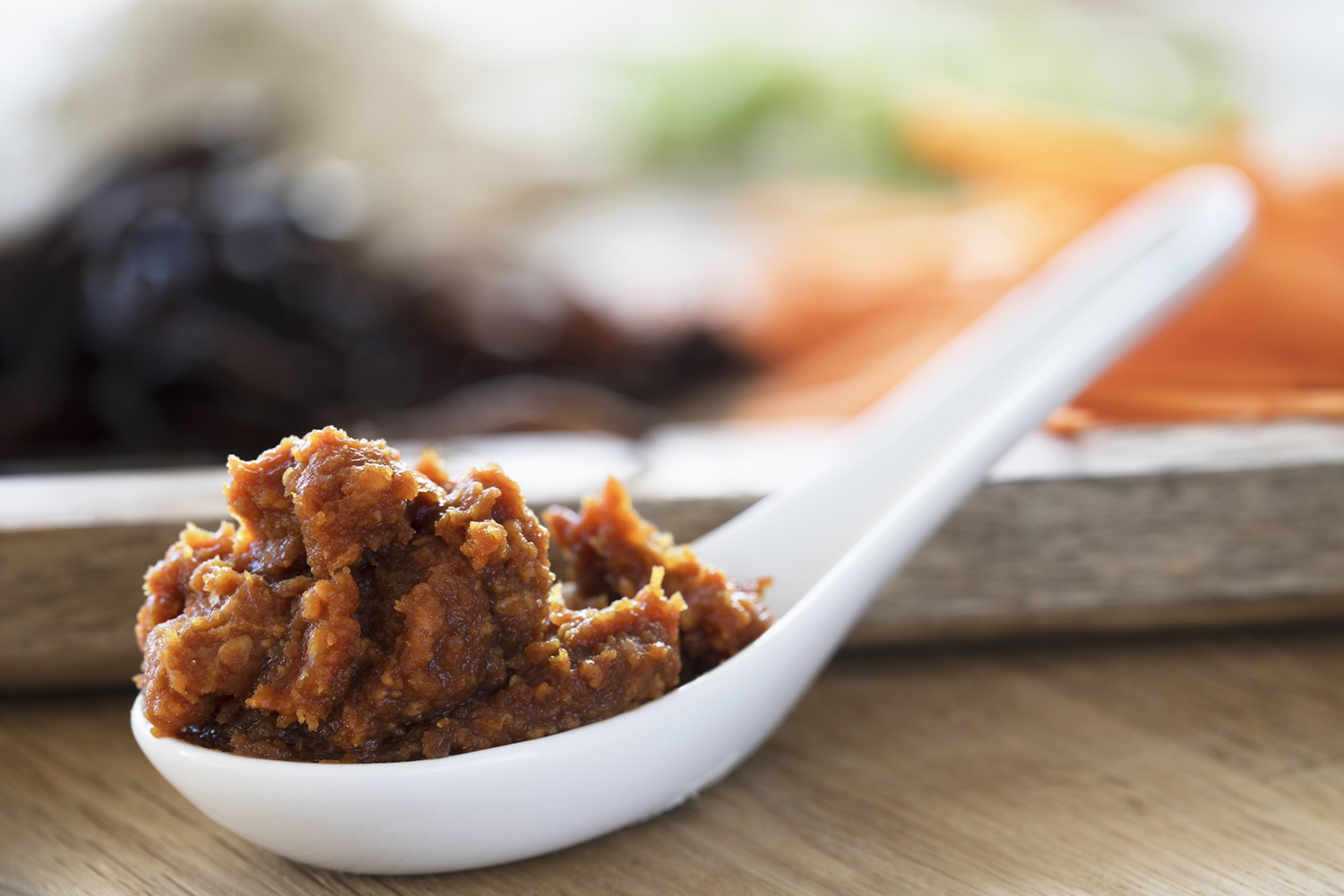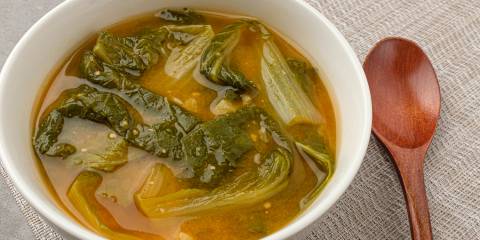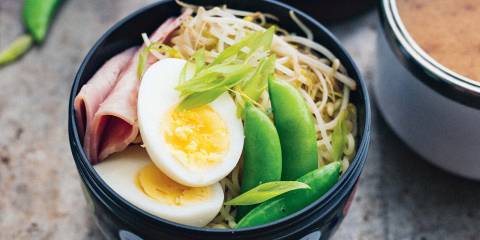We’re all familiar with sweet, sour, salty, and bitter flavors. But did you know there’s a fifth one?
It’s umami and it adds a savory component to cooking, particularly Asian cuisine.
How can you add this unique flavor to food? One of the easiest and healthiest ways is with miso.
What is Miso?
Typically made from a fermented combination of soybeans in a base of salt and the starter culture koji (typically derived from rice), miso can be added anywhere a salty, savory, and satisfying flavor is desired.
With its thick, paste-like consistency similar to peanut butter, miso can be easily mixed into many dishes.
Origins of Miso
Miso is not a new culinary trend. Originating in Asia over a thousand years ago, it was brought to the West in the 1960s through the macrobiotic diet.
These days miso’s beloved throughout Asia for its unique flavor profile. In fact, the Japanese love it so much there are more than 1,500 manufacturing plants in Japan alone!
Benefits of Miso
-
Digestion
Miso can help with digestion, since it’s a fermented food. Some brands even contain beneficial bacteria.
Research has found that the probiotics present in miso can help lessen symptoms from digestive issues like inflammatory bowel disease.
-
Diabetes
Other studies find that consuming fermented soy products like miso can delay the onset and progression of Type 2 diabetes.
-
Other Diseases
Research even indicates that consuming miso every day may help lower risks of heart disease and stomach cancer.
The benefits don’t stop there. Miso has been associated with reducing cancer cell growth and the ability to lower cholesterol levels.
-
Nutrition
One ounce of miso offers 12 percent of the recommended dietary intake (RDI) of manganese, 10 percent of vitamin K, and 5 percent of zinc.
Miso offers some protein and fiber, as well as other nutrients, like:
- copper
- phosphorus
- vitamin B2
- vitamin K
-
Fermentation
Because miso is a fermented food, its nutrients are more easily available to the body.
Keep in mind that nutritional benefits vary depending on fermentation times and ingredients used.
-
Sodium Warning
Miso is high in sodium, so if you’re watching your salt intake you may want to use small amounts.
Research shows that miso does not seem to affect the cardiovascular system the way other high-sodium foods can.
Types of Miso
Brands offer their own flavor profiles due to the amounts of soybeans, salt, and other ingredients used.
Here’s a basic breakdown of what you may find when shopping for miso.
-
Red Miso
With its long fermentation time, this variety is darker in color. Hues range from red to brown. Red miso is stronger in flavor and tastes saltier than other varieties.
-
White Miso
A traditional choice, this is generally the least salty of the misos. A shorter fermentation time creates a mellow, mild, and sweet flavor.
-
Yellow Miso
Stronger in flavor than white miso, the yellow variety is still mild tasting with earthy undertones. Yellow miso is a commonly purchased type.
-
Chickpea Miso
While not a traditional offering, chickpea miso is a good choice if you wish to avoid soy. It tastes similar to white miso.
How to Use Miso
Many know pungent miso for its starring role in miso soup, but it can be used for so much more.
Miso adds depth to:
- roasted vegetables
- broths and soups
- noodles (ramen, soba, etc.)
- sauces and spreads
- glazes
- marinades
- dressings
- grain bowls
- Asian dishes
- vegan cheese
Use lighter miso varieties for:
- sauces
- spreads
- soups
Misos that are darker in color work better in:
- grilled foods
- noodle dishes
- veggie burgers
- stir-fries
Since miso is a salty ingredient, recipes typically call for small amounts of it such as a few tablespoons.
Cooking with Miso
Since miso can have a beneficial probiotic content, add it to a dish once cooking is complete.
This applies to miso soup, too: stir miso into the soup when it’s no longer boiling and has been taken off heat.
Ideas and Inspiration
-
Make Miso Butter
Blend miso into butter to top your favorite protein or roasted vegetable dish.
-
Use to Glaze Fish
Miso’s savory quality pairs particularly well with salmon.
-
Mix Into Cookies
Take peanut butter cookies up a notch with the addition of a tablespoon or so of miso.
-
As a Salt Replacement
In a pinch, miso can be used as a replacement for soy sauce or salt.
-
In Salad Dressing
For an easy miso-based salad dressing, whisk together white or yellow miso with:
- rice vinegar
- chopped ginger
- chopped garlic
- honey
- olive oil
- toasted sesame oil
Shopping For Miso
-
Avoid GMOs
If you want to avoid GMOs, shop for certified organic varieties. Or purchase miso that’s been made without genetically modified soybeans.
Almost all soy crops in the United States are genetically modified. The misos coming from Japan or Korea are less likely to be derived from genetically modified organisms.
-
Where to Find It
Find miso in the refrigerated section of Asian markets and many large grocery stores. Miso comes packaged in tubes, bags, glass jars, and plastic containers.
-
Fermentation
Look for brands that have fermented their ingredients at least 180 days.
Keep in mind that unrefrigerated varieties won’t offer the same beneficial probiotics found in chilled versions.
-
Storage
When you get miso home, store it in the fridge where it will keep for months.
Precautions
Individuals with a soy allergy should avoid soy-derived miso.

















